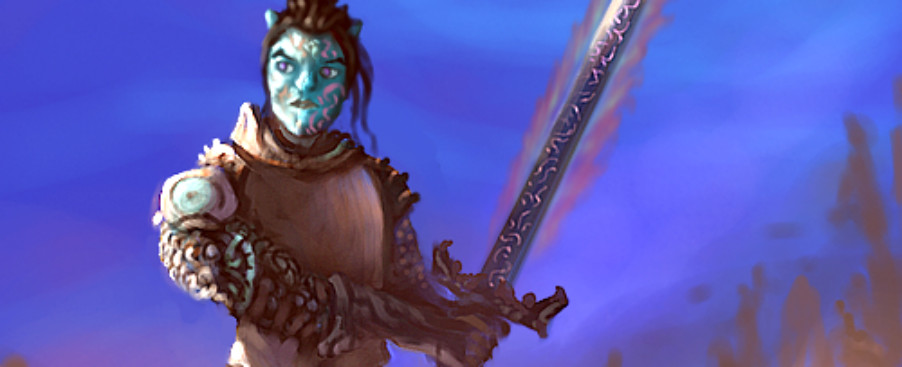Knights of the Chalice 2 Review - Page 3
-
Category: ReviewsHits: 15779

Article Index
Without a doubt, the main attraction here is the combat. Each area is tightly packed with challenging encounters that will put your tactics and understanding of the underlying systems to the test. Much like in the original game, you can only rest here in predetermined spots, and only a limited number of times, which makes smart resource management very important.
When this module was originally released for the game's Kickstarter backers, it was generally considered to be very difficult. And while you can still experience that original level of difficulty, right now, the suggested Normal mode feels moderately challenging without becoming frustrating or unfair.
With Augury of Chaos being a high-level D&D campaign, there are several ways to make things tougher on the player. Something like Pathfinder: Wrath of the Righteous, for example, inflates monster stats and then asks you to build characters that can reliably overcome a long list of natural immunities and an Armor Class of 80.
Augury of Chaos instead plays around with creative enemy placement, overwhelming numbers, and spellcasters that start battles with a long list of active buffs. I find this to be the more satisfying approach. The only thing that feels cheesy there is the developer's annoying habit of granting some of the tougher enemies a bunch of spell-like abilities that for all intents and purposes are spells, but can be used as swift and free actions purely to make your life harder.
On the other end of it, you have access to a wide range of combat maneuvers that feel very impactful, the very much overpowered high-level spells, plenty of ways to increase your initiative scores and simply not give your enemies a chance to act, and a lot of powerful magic items.
And if you're not satisfied with the gear the game gives you, you can engage in some crafting that, just like back in Knights of the Chalice, allows you to create some absolutely monstrous weapons capable of trivializing any threat.
With combat being such an important part of the whole experience, we still shouldn't forget that Augury of Chaos has plenty of non-combat encounters in the form of puzzles, riddles, and secrets.
Seeing how the game was primarily designed by one guy, its puzzles are expectedly quite idiosyncratic. The designer is fond of both math and chess? Sure, here's a puzzle combining the two, because why not. And here's a psych test. Or a coded message you have to decipher. There's even a crossword puzzle at one point.
These puzzles act as a nice change of pace and, for the most part, are pretty fun. But if you don't like them, the game has a built-in hint system that eventually just feeds you the answer.
The one outlier there is the crossword puzzle. While most of the questions there are obvious, a few simply make no sense, and asking for a hint only gives you the first letter that you already have from answering some other question. Thankfully, you can find the solution online, so if you get stuck there, just ask Google for help.
Overall, Augury of Chaos is a neat dungeon-crawling adventure that will take you somewhere in the vicinity of 30 hours to complete and probably leave you hungry for more, even if its later stages become a bit samey due to the imbalanced nature of high-level D&D.
If that's the case, you can try beating this module with a different party or opting for a higher difficulty level. But apparently, more adventures are on the way.
Other Adventures
So, what do you do after you're done with Augury of Chaos? Well, you can also play through the Tutorial module. Apart from teaching you the ropes, it acts as a self-contained adventure that in some ways feels more well-rounded than Augury of Chaos. From my understanding, it was developed after Augury, which can only mean good things for the subsequent modules.


